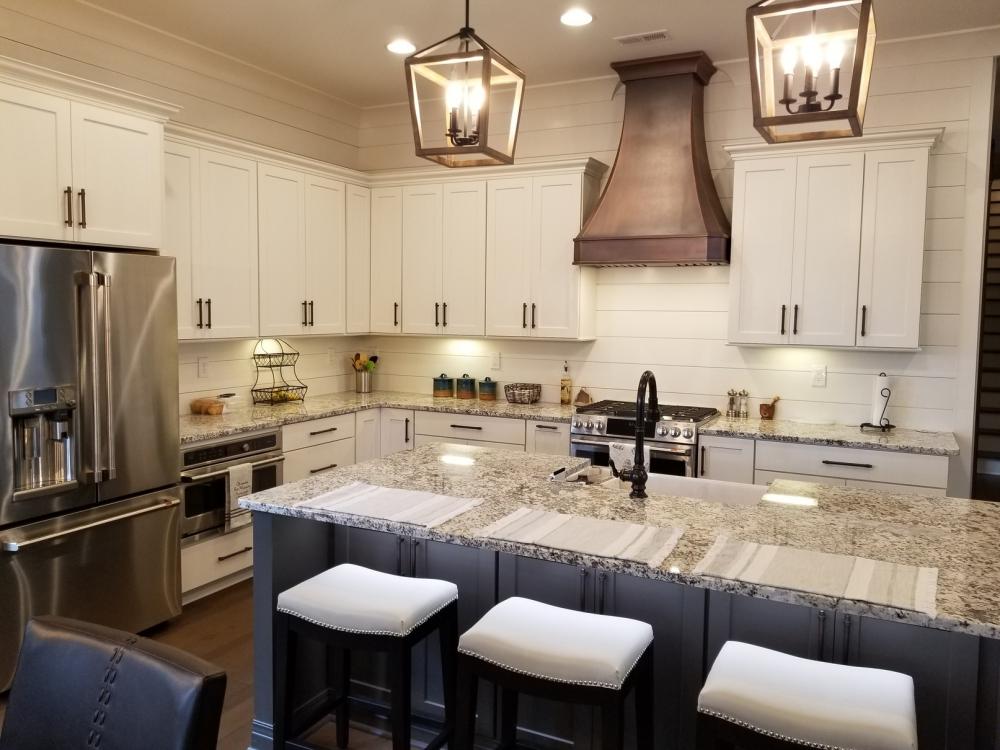Supposing you’re planning to purchase a range hood to keep your kitchen air refreshed or you intend to replace your old kitchen range with a better option, then you need to consider the CFM of a range hood.
The CFM acronym (cubic feet per minute) is a unit of measurement which describes the amount of air a range hood vents out of the kitchen per minute.
For every 10,000 BTUs of your stovetop, you need a minimum CFM of 100 to power your range hood. For instance, 1000 CFM range hoods are required for a 100,000 BTU gas stove.
The stove width is multiplied by ten. Therefore, you need a range hood with at least 420 cubic feet meter for a 42" electric stove.
We advise a range hood with at least 600 CFM to effectively vent cooking exhaust from your kitchen.
In this article, you’ll find sufficient information to help you determine how much cfm your range hood should have. We'll be giving information about
- Is higher cfm better for a range hood?
- How many cfm am I required for a gas range?
- How can I determine the size of range hood I need?
- What is a good extraction rate for a range hood?
Let's go into more detail
Is higher CFM better for a range hood?
The essence of having a new range hood in your kitchen is to remove polluted air from the kitchen environment.
Having a high CFM range hood allows you to drive out most of the airborne particles that are produced while cooking.
A lower CFM range hood will only drive a lesser volume of these. If you have a wall mount or under the cabinet range hood, we advise dividing the hood's linear feet by 100-cfm.
How much CFM do I need for the gas range?
Gas stoves usually produce more heat compared to electric range cookers. That said, you need to use a range hood with a high CFM value of not less than 600 CFM and as high as 1000 CFM.
British Thermal Units, or BTU ratings, are used to quantify heat output. Range hood cfm has a great impact on kitchen hoods and also affects your cooking style
How can I determine the size of range hood I need?
If you’re planning to purchase a range hood for your kitchen, you need to decide the size of the vent hood and the high-powered hood you want to buy.
The general practice is that your range hood should be 6 inches wider than your electric cooktops.
How to Calculate the cfm needed for my range
For you to calculate cfm range hood needed, you should follow the steps below
Understand how to measure in multiple contexts.
Although it might seem like a good idea, basing your fan estimate solely on an air balancing hood will leave you 10% short of the air duct system's intended capacity. Deep frying produces excess heat. The majority of small fans can be installed using this variation, but larger and quiet fans necessitate more precise measurements.
Learn how to determine the range hood cfm using at least two distinct fan calculator techniques to get around this. Good examples include the Plot Plan Airflow and Airflow Traverse techniques.
Calculate fans using some simple calculations.
When thinking about how to optimize air ventilation in an indoor setting, this useful arithmetic formula is quite helpful:
CFM requirements are calculated as (fpm * area), where fpm is feet per minute.
Substitute the FPM figure with the area after the area has been squared to determine the cubic feet per minute.
Best CFM calculations also require other specifics, but they all start with these fundamentals.
What is a good extraction rate for a range hood?
The extraction rate of a range hood describes its ability to suck in air. A good extraction rate for range hood can range between 700 m3/h and above for recommended cfm.
What is the Range Hood Vent Code
You might be asking yourself questions about what range hoods or kitchen hood vent codes are. These codes are important codes required for the positioning and usage of the kitchen vent hood in your home.
The following vent codes for your kitchen hood will be listed below but depending on your local building codes
- The kitchen range hood must vent outdoors
- The diameter and duct length of the kitchen hood should be considered
- The in-wall range hood duct should be of smooth metal.
- Minimum cfm or fan speed
- Makeup air systems
We'll give more information about these codes below
Range Hood must vent outside
Range hood venting must always be done outside following the user manual. They cannot exhaust into a crawlspace, attic, or place below the ceiling. Island range hoods benefit most from scaling up, especially under cabinet range hoods
As long as they are labelled and intended for that type of installation, ductless or recirculating range hoods are the primary exemption to the rule. Carbon filters that absorb dirty air must always be used with recirculating range hoods.
The following are some additional code requirements for range hood exhaust:
The duct's interior needs to be smooth (no ridges)
Airtight range hood ductwork is required.
A backdraft damper is required for the hood (a damper or "flap" stops the vent when the hood is not in use).
The vent pipe must be separate from all other exhaust systems, such as bathroom fans, and must not be connected to them.
Ducting
Range hood ducts must always be made of copper, stainless steel, or galvanized steel.
If the range hood is a downdraft model, that is the only significant exception to this rule (it sucks in air downwards and the vent goes into the floor).
Under certain circumstances, PVC plastic pipe may be used with a downdraft hood in place of metal piping.
Air System Could Be Necessary
A strong hood in a tiny kitchen might result in negative air pressure. You might need to have a makeup air system or air resistance range hood has installed if your a 400-cfm or higher cubic meter per minute rating. The range hood fan can move up a minimum of 100 cfm. Makeup air systems are mechanical devices with dampers that draw in outside air or replace the air the range hood fan also depends on the fan size and also your cooking surface
- Only gas ranges are subject to this code requirement, and only if the range is not already directly vented as they give out more fumes when used on a gas stove
In order to prevent cooking air, the makeup air unit also needs to include a damper that closes when not in use.
- How many cfm or minimum cfm 100 range hoods CFM is the bare minimum CFM required for a kitchen range hood.
The cfm for a range refers to the amount of air that range hoods can expel every 60 seconds. The majority of range hoods have more cfm range of 150-350.
Choose the best ductless range hood with Coppersmiths
Are you looking for the best desirable ductless range hood for your kitchen, CopperSmith is here to offer you a wide range of top-quality choices that you can choose from.
